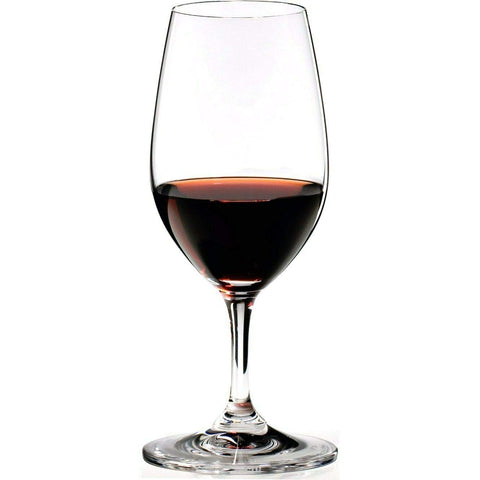South Australia is home to some of the world's most distinguished wine regions, and among them, the Barossa Valley and McLaren Vale stand as titans, each celebrated for their distinctive contributions to the global wine landscape.
While both regions are acclaimed for their robust red wines, particularly Shiraz, their unique geographical and climatic conditions create fascinating differences in the flavour profiles of their offerings.
This article delves into a comprehensive comparison of McLaren Vale and Barossa Valley wines, examining the influence of vine type, key grape varieties (both red and white), specific soil compositions, and the nuanced effects of weather and rainfall on their viticultural output.
Climate and Weather Patterns: Shaping Regional Styles
The most significant differentiator between the Barossa Valley and McLaren Vale lies in their distinct climatic profiles.
Barossa Valley:
The Barossa Valley, situated inland, experiences a continental Mediterranean climate. This means:
-
Warm to Hot, Dry Summers: Characterised by consistently high temperatures, long sunshine hours, and low humidity, particularly on the valley floor. Mean maximum temperatures in January can reach around 29°C. These conditions lead to rapid grape ripening, contributing to the intense fruit concentration and richness in the wines.
-
Cool, Wet Winters: Winters are relatively cold and wet, providing the necessary dormancy for the vines and replenishing soil moisture. Average annual rainfall is around 530mm, with roughly 75% falling between April and October.
-
Diurnal Variation: While warm during the day, the valley floor experiences cooler nights, which can help preserve some acidity in the grapes, adding balance to the wines.
-
Frost Risk: Frost can be a hazard in spring, affecting early budburst.
McLaren Vale:
McLaren Vale, located south of Adelaide on the Fleurieu Peninsula, enjoys a Mediterranean climate with a significant maritime influence.
-
Warm Summers, Moderated by Sea Breezes: Summers are warm and dry, but the region benefits from its proximity to the Gulf St Vincent. Cooling sea breezes (known as "the Gully Wind") consistently sweep through the vineyards in the afternoons and evenings. This moderates temperatures, preventing extreme heat stress and allowing for a longer, more even ripening period. Mean maximum temperatures in January are slightly lower than the Barossa, around 26-27°C.
-
Moderate, Wet Winters: Winters are moderate with reliable rainfall, ensuring adequate soil moisture. Average annual rainfall is slightly higher than the Barossa, around 580mm, with winter-dominated precipitation.
-
Lower Evaporation: Compared to the Barossa, the maritime influence also leads to lower relative humidity and relatively lower evaporation rates during the growing season.
These climatic differences are fundamental to the distinctive styles of wine produced in each region.
Soil Composition: A Diverse Underpinning
Both regions boast diverse geological profiles, contributing to the complexity of their wines.
Barossa Valley:
The Barossa Valley is known for its ancient soils, which contribute significantly to the bold structure and ripe intensity of its Shiraz.
-
Red-Brown Earths: Dominated by deep red-brown earth, often over a clay base. These soils retain moisture well, crucial for the region's generally dry-grown viticulture.
-
Sandy Loams over Red Clays: Common on the valley floor, these are inherently fertile and moderately well-drained.
-
Sands over Dispersive Brown Clays: Found in western undulating areas, these are shallower and less fertile, sometimes facing issues with waterlogging and wind erosion.
-
Variety and Age: The Barossa's soils vary widely in composition (from clay loam to sandy soils, grey to brown to red), with acidity increasing in the subsoils, which can restrict root growth and vigour. The extreme age of these soils, combined with low fertility, often leads to naturally low yields but highly concentrated fruit.
McLaren Vale:
McLaren Vale is celebrated for being one of the most geologically diverse wine regions in the world, with over 40 distinct soil types.
-
Ancient Sands and Red Clays: The region boasts a mosaic of soils, from ancient sands to red clays, ironstone, and limestone-rich subsoils.
-
Thin Soils over Bedrock: Soils are often thin, and vine roots frequently access underlying bedrock for water and nutrients, creating a direct link between geology and fruit expression.
-
Alluvial and Calcareous Soils: These contribute to different mineral profiles in the wines.
-
Impact on Viticulture: This geological diversity allows grapegrowers to select sites perfectly suited to specific varieties, influencing their expression of terroir.
Red Wine Dominance: Shiraz, Grenache, and Cabernet Sauvignon
Both regions are renowned for their powerful red wines, though with distinct stylistic interpretations.
Barossa Valley Red Wines:
-
Shiraz (Flagship): Barossa Shiraz is the undisputed icon. It's typically full-bodied, rich, intense, and opulent, with concentrated flavours of dark berry fruits (plum, blackberry, blackcurrant), liquorice, dark chocolate, and often hints of spice (pepper) and earthy notes. It’s known for its plush, powerful tannins and remarkable ageing potential.
-
Grenache: Barossa Grenache is also significant, producing ripe, fruit-driven wines with red fruit flavours (raspberry, cherry) and often savoury or spicy undertones.
-
Cabernet Sauvignon: Barossa Cabernet tends to be rich and ripe, with softer tannins than examples from cooler regions.
McLaren Vale Red Wines:
-
Shiraz (Flagship): McLaren Vale Shiraz, while still full-bodied, is often described as more elegant, balanced, and nuanced than its Barossa counterpart. It exhibits ripe dark fruits (blackberry, cherry), chocolate, and often subtle savoury, spicy, or even minty notes. The tannins are typically silkier and finer, with brighter acidity attributed to the cooling sea breezes.
-
Grenache: McLaren Vale is celebrated for its old vine Grenache, producing aromatic, medium-bodied wines with fragrance and amazing power and longevity, reflecting diverse sub-regional soil profiles.
-
Italian and Mediterranean Reds: McLaren Vale has excelled with alternative red varieties like Sangiovese, Barbera, Montepulciano, Nero d'Avola, and Tempranillo, which thrive in its Mediterranean climate.
White Wine Evolution: From Traditional to Alternative
While red wines dominate, both regions also produce noteworthy white wines, though their focus differs.
Barossa Valley White Wines:
-
Riesling: The Eden Valley, part of the wider Barossa Zone, is internationally acclaimed for its elegant, dry Rieslings, characterised by classic lime flavours and great ageing potential.
-
Chardonnay: Barossa Chardonnay tends to be richer and fuller-bodied, reflecting the warmer climate.
-
Semillon: Good quality Semillon can also be found in the Barossa Valley.
McLaren Vale White Wines:
Mediterranean Varieties: McLaren Vale has a growing reputation for Mediterranean white varieties that thrive in its climate and contribute to its "alternative white wine rise." Key examples include:
-
Fiano: Known for high natural acidity, drought tolerance, and characterful wines with nutty and citrus notes.
-
Vermentino: Produces crisp, refreshing wines with citrus and saline notes.
-
Albariño, Greco, Falanghina: Other emerging varieties showing immense promise.
-
Chardonnay: McLaren Vale Chardonnay is produced, often showcasing ripe fruit flavours with balanced acidity.
Key Features:
-
Barossa Valley has a continental Mediterranean climate (hotter summers, colder winters).
-
McLaren Vale has a maritime-influenced Mediterranean climate (cooler summers due to sea breezes).
-
Barossa's soils are ancient red-brown earths, leading to bold, concentrated wines.
-
McLaren Vale boasts over 40 diverse soil types, yielding nuanced terroir expression.
-
Barossa Shiraz is typically powerful, rich, and full-bodied with plush tannins.
-
McLaren Vale Shiraz is often more elegant, balanced, and fruit-driven with finer tannins.
FAQ:
Q: What is the main difference in climate between the Barossa Valley and McLaren Vale?
A: The Barossa Valley has a warmer, more continental climate, while McLaren Vale benefits from cooling sea breezes from the Gulf St Vincent, giving it a more moderate maritime influence.30
Q: Which region is best known for Shiraz?
A: Both regions are globally renowned for their Shiraz, but they offer distinct styles: Barossa for bold and powerful, McLaren Vale for elegant and balanced.
Q: Are there any specific white wines that thrive in McLaren Vale?
A: Yes, McLaren Vale is gaining recognition for Mediterranean white varieties such as Fiano and Vermentino, which are well-suited to its climate.31
Q: How do the soil types differ between the two regions?
A: The Barossa Valley is known for ancient, deep red-brown earths, while McLaren Vale boasts over 40 diverse soil types, including ancient sands, red clays, and limestone.
Q: Can older vines be found in both the Barossa Valley and McLaren Vale?
A: Yes, both regions are home to some of the oldest Shiraz and Grenache vines in the world, contributing to the concentration and complexity of their wines.




Comments (0)
There are no comments for this article. Be the first one to leave a message!